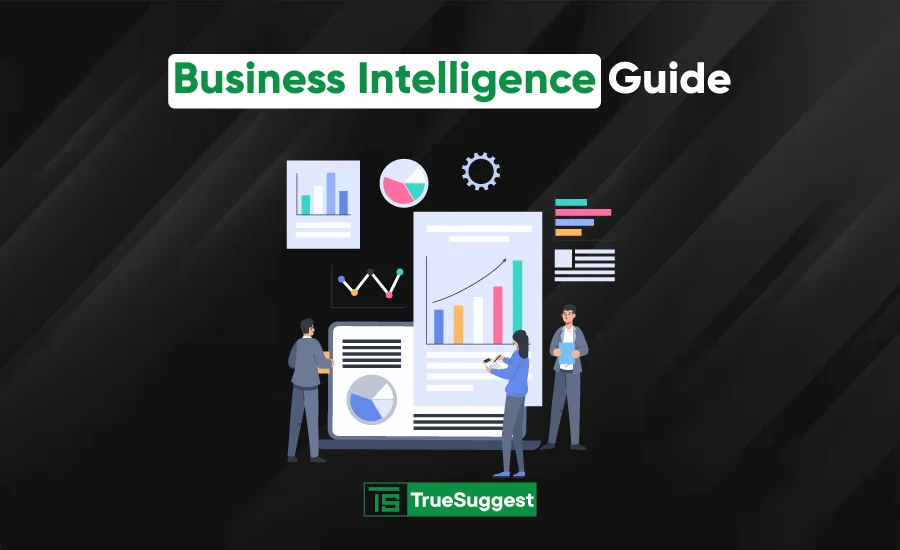What is Business Intelligence - A Total Helpline

Business Intelligence is a modern technology-driven process. It analyzes data and delivers actionable information that helps executives and managers make business decisions.
With nearly 50% of businesses already utilizing BI tools and forecasts indicating continued growth, the importance of BI is undeniable. Understanding BI can be challenging for those who have yet to adopt a BI tool or are looking to learn more about it. That's why we've created this complete guide to explain BI, how it works, and more.
What is Business Intelligence?
BI combines business analytics, data mining, data visualization, data tools, and infrastructure. It will help any business company make good, accurate data-driven decisions. This modern BI helps find the best solutions, adapt to change quickly, and eliminate inefficiencies. It prioritizes flexible self-service analysis, governed data on trusted platforms, empowered business users, and speed to insight.
Traditional intelligence for business, initially emerging in the 1960s, was a system for sharing information across organizations. The term "Business Intelligence" was coined in 1989, marking the beginning of computer models for decision-making. In this modern world, business intelligence business plays a huge part in improving the business market.
How BI Works-Discuss in Full
We all know that Businesses and organizations have questions and goals. To archive these questions and monitor performance against their goals, they collect and analyze the necessary data. After analyzing the data, they decide on the actions needed to achieve their objectives.
On the technical side, raw data is gathered from business systems. This data is processed and stored in—
- Data warehouses
- The cloud
- applications
- Files
Once stored, users can access the data to begin the analysis process, answering business questions. BI platforms also provide visualization tools that transform data into charts or graphs. These tools make it easier to present findings to key stakeholders and decision-makers.
What are BI Techniques (A-Z)
(BI) is not just a single tool or process but an umbrella. Let's learn the details then. It's a term for various methods and processes for collecting, storing, and analyzing data from business operations to optimize performance.
These elements provide a total business view, aiding in better, actionable decision-making. Over the years, BI has evolved to include many processes and activities to improve performance.
- Data Mining: Using databases, statistics, and machine learning (ML) to uncover trends in large datasets.
- Reporting: Sharing data analysis with stakeholders to help them draw conclusions and make decisions.
- Performance Metrics and Benchmarking: Comparing current performance data to historical data to track performance against goals, often through customized dashboards.
- Descriptive Analytics: Conducting preliminary data analysis to understand what happened.
- Querying: Asking specific questions of the data, with BI tools extracting the answers from datasets.
- Statistical Analysis: Further exploring the results from descriptive analytics using statistical methods to understand how and why trends occurred.
- Data Visualization: Converting data analysis into visual formats such as charts, graphs, and histograms for easier consumption.
- Visual Analysis: Exploring data through visual storytelling to communicate insights on the fly and maintain the analysis flow.
- Data Preparation: Compiling data from multiple sources, identifying dimensions and measurements, and preparing it for analysis.
Benefits of Intelligence for Business
(BI) has become an essential component for modern businesses, providing them with the tools and insights needed to make informed decisions. Here, we'll explore the various benefits of intelligence for business.
Decision-Making
One of the primary benefits of BI is its ability to significantly improve decision-making processes. BI systems reduce the extra data from various sources and present it in an easily understandable format. This allows decision-makers to access accurate and up-to-date information quickly.
Managers can identify trends, detect patterns, and gain previously hidden insights. This leads to more informed and effective strategic planning, enabling companies to make decisions backed by data rather than instinct.
Improved Operational Efficiency
BI helps businesses streamline their operations by identifying inefficiencies and areas for improvement. By analyzing data related to operational processes, companies can pinpoint bottlenecks, and reduce waste.
For example, in a manufacturing environment, BI can be used to monitor production lines and identify any delays or issues, allowing for immediate corrective actions. This results in improved productivity, reduced costs, and improved overall efficiency.
Increased Competitive Advantage
Real-time data and insights can provide a significant competitive edge. BI enables companies to stay ahead of market trends and respond quickly to changes. Businesses can develop strategies that differentiate them from their competitors by analyzing competitor performance, market conditions, and customer preferences.
This proactive approach allows companies to capitalize on new opportunities and mitigate potential risks. As a result, it ensures that they remain competitive.
Better Customer Insights
Understanding customer behaviour and preferences is important for any business aiming to improve its products or services. BI tools allow companies to collect and analyze customer data from various touchpoints, such as:
- Sales transactions
- Social media interactions
- Customer feedback
This comprehensive view of customer behaviour helps businesses customise their offerings to meet customer needs better.BI can identify high-value customers, enabling targeted marketing and personalized experiences that drive customer retention.
Data Quality and Accuracy
BI systems help improve the quality and accuracy of data within an organization. Bi intelligence ensures that the information used for analysis is reliable and consistent. This reduces the risk of errors and discrepancies that can arise from using disparate data sources. High-quality data is important for making sound business decisions. It ensures that insights derived from the data are accurate and trustworthy.
Easy Data Visualization
Complex data sets can be challenging to interpret, but BI tools simplify this process through advanced data visualization techniques. Dashboards, charts, and graphs present data in a visually appealing and easily digestible format.
It lets stakeholders quickly grasp critical insights and trends without sifting through extensive reports. Simplified data visualization improves communication across the organization, ensuring everyone is on the same page and can act on the information effectively.
Predictive Analytics
One of the more advanced capabilities of bi intelligence is predictive analytics. BI tools can predict many things by applying statistical algorithms and machine learning techniques. Includes—
- Future sales
- Market trends
- Customer behavior and more.
This foresight allows businesses to plan proactively and efficiently. Predictive analytics provides a significant advantage in anticipating market changes and staying ahead of the competition.
Cost Savings
Implementing BI intelligence can lead to substantial cost savings for businesses. By identifying inefficiencies and areas of waste, companies can reduce operational costs and improve profitability.
For example, BI can reveal underperforming products or services, enabling businesses to reallocate resources to more profitable areas. BI can help optimize inventory management, reducing excess stock and associated holding costs.
Overall, the insights gained from BI enable businesses to operate more cost-effectively and use their financial resources better.
Reporting
Traditional reporting methods can be time-consuming and prone to errors. BI automates the reporting process, generating accurate and timely reports with minimal manual intervention.
It saves time and ensures that reports are based on the most recent data. Automated reporting allows businesses to focus on analyzing and acting on the insights rather than spending time on data collection and report generation. This efficiency improves overall productivity and enables quicker decision-making.
Collaboration
Business intelligence created a culture of collaboration within the organization. With the help of centralized data accessible to all relevant stakeholders, the team can collaborate easily. Not only collab but also share valuable insight and efforts toward the goals.
This transparency eliminates the silos and ensures everyone has access to the same information.This can help to create more accurate strategies and improve organizational performance.
Scalability
As businesses grow, their data needs also expand. BI systems are scalable, meaning they can handle increasing volumes of data and more complex analyses as the business evolves.
This scalability ensures that the BI system remains relevant and effective, regardless of the size or complexity of the organization. Investing in a scalable bi intelligence solution allows businesses to future-proof their data strategy and continue deriving value from their data as they grow.
Conclusion
There is no doubt about that, Business Intelligence (BI) technology is increasing rapidly. Trends and innovations are poised to transform how businesses collect, analyze, and utilize data.
For managers and decision-makers, staying informed about these developments is important for maintaining a competitive edge and fully leveraging BI technologies. This section provides an overview of the most significant trends in BI technology that are set to shape the industry






























